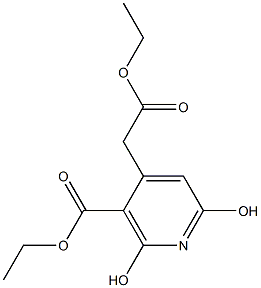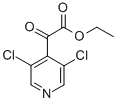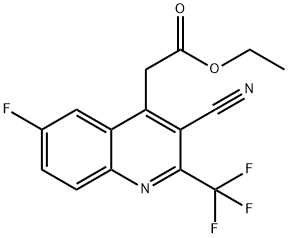ETHYL 4-PYRIDYLACETATE
- CAS NO.:54401-85-3
- Empirical Formula: C9H11NO2
- Molecular Weight: 165.19
- MDL number: MFCD00051830
- EINECS: 259-150-2
- SAFETY DATA SHEET (SDS)
- Update Date: 2023-05-09 09:30:27

What is ETHYL 4-PYRIDYLACETATE?
The Uses of ETHYL 4-PYRIDYLACETATE
Ethyl 4-Pyridylacetate shows potential ability as an anticonvulsant and also exhibits neuropathic pain-attenuating properties.
The Uses of ETHYL 4-PYRIDYLACETATE
Ethyl 4-pyridylacetate is a pyridine-based compound used for the grafting onto the self-adhesive gold substrates.
It may be used for the the following:
- As a starting material in the synthesis of 4-piperidylethanol.
- As a reactant in the synthesis of 4-(pyridyl) isosteres of meperidine.
- As a starting material in the synthesis of ethyl-4-piperidylacetate.
General Description
Ethyl 4-pyridylacetate is an ethyl ester of 4-pyridyl acetic acid. Its hydrochloride salt was used to prepare the starting material required for the synthesis of 2,2-dideutero-1-azabicyclo(2,2,2)-octane. It participates as a reagent in the synthesis of triarylethane phosphodiesterase 4 inhibitors.
Properties of ETHYL 4-PYRIDYLACETATE
| Melting point: | 18-19 °C (lit.) |
| Boiling point: | 127-128 °C/14 mmHg (lit.) |
| Density | 1.079 g/mL at 25 °C (lit.) |
| refractive index | n |
| Flash point: | >230 °F |
| storage temp. | Inert atmosphere,Room Temperature |
| pka | 5.33±0.10(Predicted) |
| BRN | 123786 |
| CAS DataBase Reference | 54401-85-3(CAS DataBase Reference) |
Safety information for ETHYL 4-PYRIDYLACETATE
| Signal word | Warning |
| Pictogram(s) |
 Exclamation Mark Irritant GHS07 |
| GHS Hazard Statements |
H315:Skin corrosion/irritation H319:Serious eye damage/eye irritation H335:Specific target organ toxicity, single exposure;Respiratory tract irritation |
| Precautionary Statement Codes |
P261:Avoid breathing dust/fume/gas/mist/vapours/spray. P264:Wash hands thoroughly after handling. P264:Wash skin thouroughly after handling. P280:Wear protective gloves/protective clothing/eye protection/face protection. P304+P340:IF INHALED: Remove victim to fresh air and Keep at rest in a position comfortable for breathing. P305+P351+P338:IF IN EYES: Rinse cautiously with water for several minutes. Remove contact lenses, if present and easy to do. Continuerinsing. P405:Store locked up. |
Computed Descriptors for ETHYL 4-PYRIDYLACETATE
New Products
4-Fluorophenylacetic acid 4-Methylphenylacetic acid N-Boc-D-alaninol N-BOC-D/L-ALANINOL Tert-butyl bis(2-chloroethyl)carbamate 3-Morpholino-1-(4-nitrophenyl)-5,6-dihydropyridin- 2(1H)-one Furan-2,5-Dicarboxylic Acid Tropic acid S-2-CHLORO PROPIONIC ACID ETHYL ISOCYANOACETATE 2-Bromo-1,3-Bis(Dimethylamino)Trimethinium Hexafluorophosphate (6-METHYL-[1,3]DITHIOLO[4,5-b]QUINOXALIN-2-ONE INDAZOLE-3-CARBOXYLIC ACID 4-IODO BENZOIC ACID (2-Hydroxyphenyl)acetonitrile 4-Bromopyrazole 5,6-Dimethoxyindanone 2-(Cyanocyclohexyl)acetic acid 4-methoxy-3,5-dinitropyridine 2-aminopropyl benzoate hydrochloride 1-(4-(aminomethyl)benzyl)urea hydrochloride diethyl 2-(2-((tertbutoxycarbonyl)amino) ethyl)malonate tert-butyl 4- (ureidomethyl)benzylcarbamate Ethyl-2-chloro((4-methoxyphenyl)hydrazono)acetateRelated products of tetrahydrofuran








You may like
-
 Ethyl 4-pyridylacetate 95% CAS 54401-85-3View Details
Ethyl 4-pyridylacetate 95% CAS 54401-85-3View Details
54401-85-3 -
 Ethyl 4-Pyridylacetate CAS 54401-85-3View Details
Ethyl 4-Pyridylacetate CAS 54401-85-3View Details
54401-85-3 -
 1975-50-4 98%View Details
1975-50-4 98%View Details
1975-50-4 -
 2-HYDROXY BENZYL ALCOHOL 98%View Details
2-HYDROXY BENZYL ALCOHOL 98%View Details
90-01-7 -
 2-Chloro-1,3-Bis(Dimethylamino)Trimethinium Hexafluorophosphate 221615-75-4 98%View Details
2-Chloro-1,3-Bis(Dimethylamino)Trimethinium Hexafluorophosphate 221615-75-4 98%View Details
221615-75-4 -
 61397-56-6 CIS BROMO BENZOATE 98%View Details
61397-56-6 CIS BROMO BENZOATE 98%View Details
61397-56-6 -
 14714-50-2 (2-Hydroxyphenyl)acetonitrile 98+View Details
14714-50-2 (2-Hydroxyphenyl)acetonitrile 98+View Details
14714-50-2 -
 118753-70-1 98+View Details
118753-70-1 98+View Details
118753-70-1
Statement: All products displayed on this website are only used for non medical purposes such as industrial applications or scientific research, and cannot be used for clinical diagnosis or treatment of humans or animals. They are not medicinal or edible.